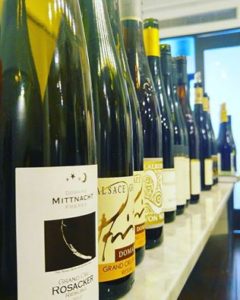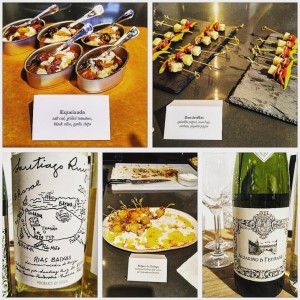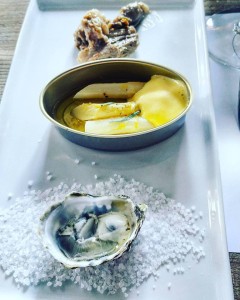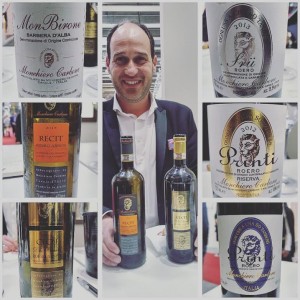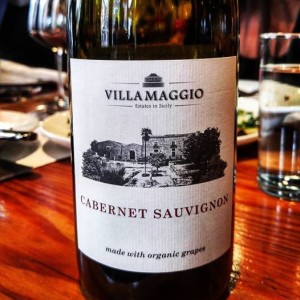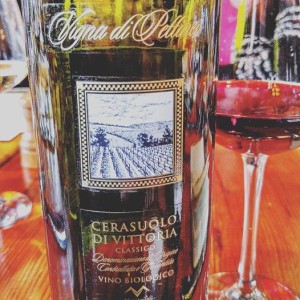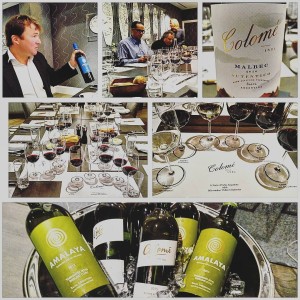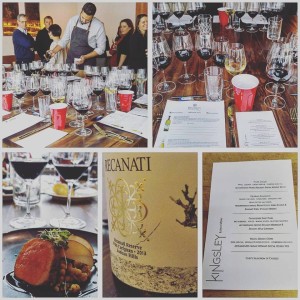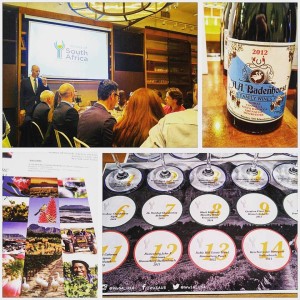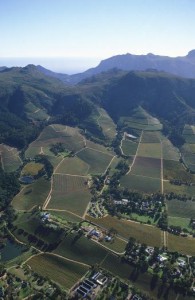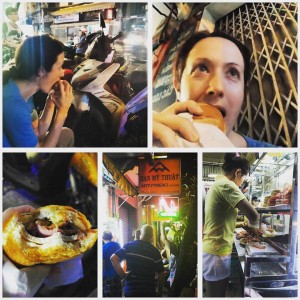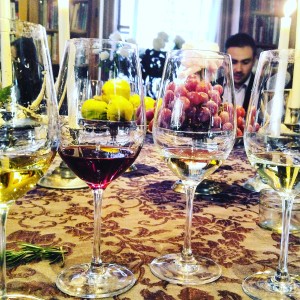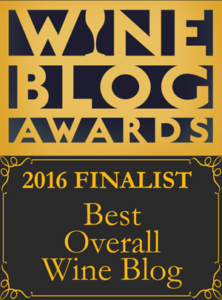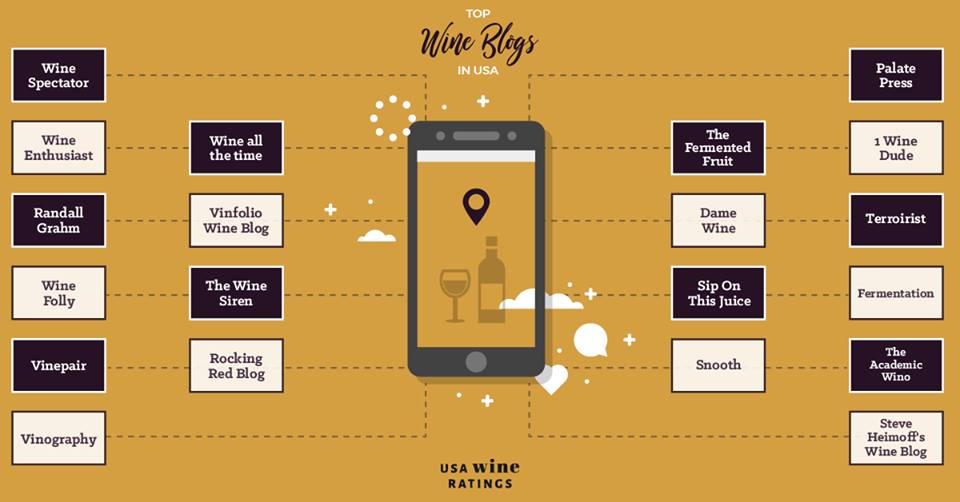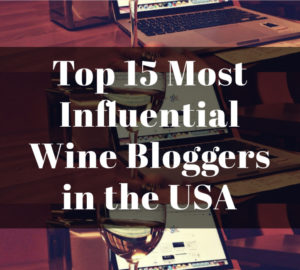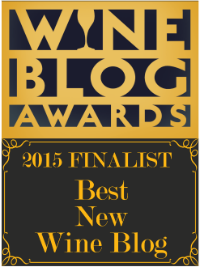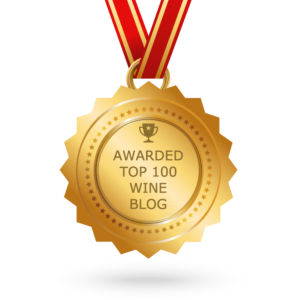There are some things in the wine world we can never talk too much about – alcohol levels, wine scores, and terroir. I always like to quote from The Oxford Companion to Wine when defining the term terroir: “Terroir — much-discussed term for the total natural environment of any viticultural site.” The idea of terroir makes a particular wine unique to a particular place. Sometimes terroir can refer to a tiny vineyard and sometimes it can refer to a large region. The factors that influence terroir can be lumped into two broad categories: Land and Climate. Of course within those two general categories there are many more sub-categories that range from soil (color and type of soil), sunlight, macroclimate to microclimate, and so on and so on. But this post will focus on soil.
The color of soil can affect ripening because darker colors absorb more heat and then radiate it back to the grapes. And while we are talking about color let’s talk about the color “wavelength” of light itself – even that has been shown recently by Geisenheim University to have an influence on the development of the grapes during the growing season.
Why do we want to connect aromas and flavors in wine to a specific place?
We want to be connected to a place when we are spending a significant amount of money on wine. That is one of the top reasons to spend more for wine (even though, probably, the number one reason is an assurance of higher quality). But we are looking for something special, something that will transport us to another world. And it doesn’t always have to be another world, sometimes we need to reconnect to our sense of place locally – rediscover the magic of the place we inhabit.
If we just wanted to get intoxicated, not that there is anything wrong with that, then we could simply buy the cheapest alcohol we could get – translating into cheap spirits.
Yet wine, and artisanal spirits even, have become more significant to the American population. People want stories; they want to taste and smell the vineyards in their glass, to feel connected.
Connecting
We are living in interesting times. Some fear, rightly so, that people are connecting less because they are distracting themselves with social media. I’m sure many of you know, just as I do, that when you give yourself ways to not confront issues in relationships it creates distance so that, through time, people who were once close start to feel like strangers.
Okay, so that’s the bad.
The good is that social media gives people a chance to be themselves without feeling like they are directly weird-ing anyone out; yes sometimes social media can be weird, but you know what I mean…. You can talk about your feelings, politics, hobbies or deeply personal stories and not feel like you are the person who mentioned something highly inappropriate at a dinner party. No surprise, I have been that person. But you can place it on your Facebook page and people can decide if they want to see it, if they want to engage with it and/or if they want to continue to have you on their feed.
It is not like talking to someone face to face and saying, “I like to dress up as a Jedi once in a while.” The other person gets an intense look of panic in their eyes and they wonder for a brief moment, “Either this person is crazy or the most awesome person on earth.” And so we tend to skip all of the fun and sometimes deeply relevant information about ourselves when we talk to people in person.
But just like social media is an indirect connection, so is wine from a specific place an indirect connection to that place. It gives us a chance to connect to either a land far away or nearby without us having to risk rejection.
How Riesling & Limestone help me to connect
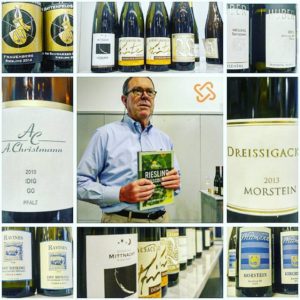 Almost a month ago, I was invited to a seminar about Riesling grown in limestone soils, led by John Winthrop Haeger. Haeger is a sinologist (a specialist in Chinese language, literature and civilization), an historian and an academic administrator who has written about the science of wine. His specialties are Riesling and Pinot Noir, and he currently has a book out called Riesling Rediscovered: Bold, Bright, and Dry which is an in-depth look at this variety that is adored by wine geeks but still relatively unknown amongst many wine drinkers.
Almost a month ago, I was invited to a seminar about Riesling grown in limestone soils, led by John Winthrop Haeger. Haeger is a sinologist (a specialist in Chinese language, literature and civilization), an historian and an academic administrator who has written about the science of wine. His specialties are Riesling and Pinot Noir, and he currently has a book out called Riesling Rediscovered: Bold, Bright, and Dry which is an in-depth look at this variety that is adored by wine geeks but still relatively unknown amongst many wine drinkers.
Many times in the past I have gotten excited at the notion that I would learn something about a certain type of soil that would help me to feel a stronger connection to the idea of terroir. I’m afraid to say that often times I have been disappointed because really no correlations would be made between aromas and flavors in the grapes and to what was in the dirt.
I can happily say that was not the case this time.
Limestone Soil
Limestone is a sedimentary soil that is high in calcium carbonate.
If you have ever been to France, you have probably seen limestone even if you have never been to a vineyard – many of the old buildings are made from it. Limestone can be so solid and hard that it can be used for building material, it can also be not as solid, sometimes it is ground up (as lime) or added into concrete materials, and finally it can play only a small part in another soil, such as a dominant clay soil.
Limestone soil is alkaline – which basically means it is low in acidity and has a high pH. pH imbalances can affect which nutrients are taken up by the vine in different concentrations, potentially leading to some unwanted conditions such as chlorosis (caused by various mineral deficiencies). But recent research has been linking limestone to a distinctive aroma in Riesling.
TDN
TDN is a shortened name of the chemical 1,1,6-trimethyl-1,2-dihydronaphthalene, which is that petrol/kerosene flavor one sometimes smells in Riesling wines. Some of us love it, some hate it, and some are fine with it as long as it doesn’t dominate the wine. Well, what is so cool is that they are starting to see a trend between more acidic soils (which have lower pH) and the development of the TDN compound. Haeger said that classic Riesling from the Mosel is predominantly grown in slate soils that are high in acid, hence why many of us associate that kerosene note with classic Riesling.
And so limestone, which is a low acid soil, should produce Riesling grapes that are less likely to have that TDN, petrol note. I have a high tolerance for that aroma and so most of the time I find it pleasant. Alternatively, Riesling is a pretty variety and so it is nice to have versions that express the beauty of the fruit.
As a side note, they are also finding that richer soils with higher nitrogen concentration are less likely to produce TDN, as a lack of nitrogen possibly encourages its production. And so if the limestone soil is drastically lacking in nitrogen, it could end up producing TDN anyway. Of course this can be rectified over time through working the soil but that takes a very dedicated producer.
This piece of information, Riesling + Limestone = Less TDN is exciting to me. Not because I love or hate TDN but it is connecting something in the soil to something in the glass. They have a long way to go to prove exactly why they are seeing this, but it seems like this is a very new way to look at the old concept of terroir.
Battenfeld-Spanier
 During the seminar, we tasted though 16 Rieslings, in sets of 4, to showcase vineyards that had limestone, to some degree, in the soil (with a fun Ravines sparkling Riesling from a predominantly limestone vineyard to get us warmed up so to speak). But the producer that really screams out with intense, extreme limestone sites is Battenfeld-Spanier. Carolin Spanier and Hans Oliver Spanier are the co-owners, husband and wife team of Battenfeld-Spanier winery. Their wines made my heart speed up with pure giddy joy.
During the seminar, we tasted though 16 Rieslings, in sets of 4, to showcase vineyards that had limestone, to some degree, in the soil (with a fun Ravines sparkling Riesling from a predominantly limestone vineyard to get us warmed up so to speak). But the producer that really screams out with intense, extreme limestone sites is Battenfeld-Spanier. Carolin Spanier and Hans Oliver Spanier are the co-owners, husband and wife team of Battenfeld-Spanier winery. Their wines made my heart speed up with pure giddy joy.
The wines were from Rheinhessen, Germany, in an area that has been known for extreme rocky limestone vineyards that were abandoned due to the expense of working such land – as many of us know there is not much money in growing wine grapes, especially quality wine grapes. Hans Oliver Spanier, winemaker as well as co-owner, made it his mission to find every plot of limestone, rocky soil in this area and rework the land by moving rocks, top soil and planting vines in a way that would make world class wines. The story is impressive and the wines (listed below with the other tasting notes) expressed such a pristine fruit and high acidity that gave these wines lots of life and a high concentration of flavor that was delivered in a linear, provocative way.
Limestone: Acidity & Flavor
Not to get too much into the science, but it was also discussed briefly that research at the University of Bordeaux linked soils rich in calcium, such as limestone, with maintaining acidity in grapes late into the growing season. This may not only point to giving the wines more acidity overall, but the opportunity to allow the grapes to hang longer, potentially developing more complexity and flavor concentration in the grapes without sacrificing acidity.
And one more piece of info (I promise this is it!) water stress turns out to increase terpenes, which are compounds that are the building blocks in grapes that help to create aromas and flavors. Limestone typically has great drainage so is conducive to water stress in dry areas. BUT…. and this is a big but… flavor enhancers such as norisoprenoids (another class of compounds) are less available in water stressed areas and so that could lessen aromas and flavors.
So what does this tell us?
No two sites are the same because there are so many factors. But we can say that Riesling grown in predominant limestone, for instance, can have a tendency toward particular traits.
Riesling Rediscovered: Bold, Bright, and Dry
 I have just started to read, or I should say skip around, John Winthrop Haeger’s new book. Even though he focuses on dry Riesling across the Northern Hemisphere, it is an incredible book that goes into a comprehensive examination of this variety which I think can be appreciated by those who love dry and sweet Rieslings. I will report on it in more depth when I have time to read the whole book… but I already see it as a top reference book for Riesling.
I have just started to read, or I should say skip around, John Winthrop Haeger’s new book. Even though he focuses on dry Riesling across the Northern Hemisphere, it is an incredible book that goes into a comprehensive examination of this variety which I think can be appreciated by those who love dry and sweet Rieslings. I will report on it in more depth when I have time to read the whole book… but I already see it as a top reference book for Riesling.
The Need to Connect
The need to connect has always fascinated me. I guess because it was something that did not come easily to me in my formative years. Sometimes, I think many of our major world problems come from feeling disconnected to our fellow humans. That is why generalizations can be unintentionally divisive statements that pin people against each other. Great Riesling doesn’t only come from slate, it comes from limestone too, and they can both be great and yet different – one not taking away any glory from the other. But it not only takes time to learn about the true details behind generalizations, it also takes the discipline that we are not going to jump to completely one side or the other.
Some may feel that the idea that limestone soils can make spectacular Riesling wines will be a threat to those historically great sites in slate vineyards; conversely others will feel it will help all Riesling growing regions as a whole. But the issue is not so black and white… just like the explanations of how limestone soils can affect Riesling are not so black and white.
John Winthrop Haeger said at the beginning of the seminar, “… most of these soil stereotypes…have very little basis in science but quite a lot of basis in history and habit.”
And history and habit always need to be challenged if we are going to make the world a smaller place while increasing the diversity of our connections.
In the end my hope is that learning more information will increase opportunities for Riesling growers around the world, give even more pleasure to Riesling lovers and that all of us can connect in the pure joy which is Riesling.
***********************************************************
Tasting Notes: Riesling from Limestone Seminar on April 27th, 2016
Sparkling Riesling poured before start of seminar:
-2013 Ravines Wine Cellars, Finger Lakes AVA, Argetsinger Vineyard: Flinty, smoky minerality with peach flavors and light body. I decided to taste it an hour later – while it was flat, it was still really lovely and so says a lot about the quality of the fruit.
2013 was a very cold vintage so they decided to make a sparkling Riesling wine from this predominately limestone vineyard Argetsinger for the first time.
We had the rest of the 16 wines in the seminar in sets of 4.
1st Set: DEIDESHEIM (PFALZ) and ALSACE
-2013 Weingut Von Winning, [Deidesheimer] Kalkofen GG, Pfalz, Germany: Bright acidity but not too fierce with juicy peach flavors and a relatively rich body for Riesling.
Deidesheim Pfalz is right above the Alsace border.
The Kalkofen vineyard or “chalk kiln” was an area that was mined for lime to be used as building material.
-2012 Domaine Pfister, Alsace Grand Cru Engelberg, Alsace, France: More stony and spicy quality than fruit with a bit of lemon zest on the finish.
Alsace in 2012 had flowering problems, millerandage (mixture of small and big berries in the same bunch) and rot. Bad vintage for botrytis sweet wines and just sweet wines in general.
They are picking on average 30 days sooner than they did 30 years ago in Alsace, and so some decisions in the vineyard have changed, such as when to harvest, but also they are choosing later ripening clones as to avoid high alcohol levels.
-2010 Domaine Pfister, Alsace Grand Cru Engelberg, Alsace, France: More flesh on the palate, especially compared to 2012, yet still had that small white stone intensity of aromas on the nose. Also, fierce acidity which was nice with the fleshy body.
Many of you may remember that 2010 brought extremely high levels of acidity and some winemakers panicked and inoculated the wines to assure MLF (which defeats the whole purpose of using an aromatic grape like Riesling) and in the worse cases deacidified the wines. But producers such as Domaine Pfister, who did not mess with the acidity, were eventually rewarded once the acidity started to settle into the wine and turn into energetic beauties such as the above.
-2012 Domaine Mittnacht- Frères, Alsace Grand Cru Rosacker, Alsace, France: A little bit more weight in the mid palate with extract, and intensely aromatic floral notes.
Rosacker is a great Grand Cru vineyard in the “sweet spot” of Alsace. The famous walled plot Clos Ste. Hune (which makes one of the most icon wines: Trimbach’s Clos Ste. Hune) is a piece of land within the Rosacker vineyard. This is a less extreme site compared to Engelberg (a much steeper site).
2nd Set: TRAISENTAL (AUSTRIA) and KONIGSBACH (PFALZ)
-2014 Weingut Huber, Traisental “Terrassen”, Austria: Restrained and linear with minerality dominating.
There is not much limestone in Austria except Traisental vineyard (only 2 producers known to make good Riesling in limestone and Weingut Huber is one).
-2010 Weingut Huber, Traisental Berg Erste Lag, Austria: A great example of a 2010 that was singing and really found a nice balance with that laser acidity. The marked acidity helps to lift the pristine stone and citrus fruit along the long finish.
-2014 Weingut A. Christmann, [KONIGSBACH] Idig GG, Pfalz, Germany: More ripe apricot flavors than peach and lots of weight. A delicious wine that could hold up to richer dishes.
Idig is almost a monopole and it is a vineyard that has consistently stayed in one piece for centuries, which is rare considering the German Wine Law of 1971 reassigned various vineyards to be linked to other vineyards. Idig was lucky enough to have survived being chopped up and redistributed.
Idig is a good example of a high clay, high water retention site with very fine particulate matter and a relatively gentle slope.
-2010 Weingut A. Christmann, [KONIGSBACH] Idig GG, Pfalz, Germany: This had more fruit than the 2014, or perhaps it was more generous because it has had some time in bottle. Lively acidity balanced the richness of the fruit and it had a long, flavorful finish.
3rd Set: FINGER LAKES AND FRAUENBERG (RHEINHESSEN)
-2012 Ravines Wine Cellars, Finger Lakes AVA, Argetsinger Vineyard, Finger Lakes, New York, USA: Apricot pie with crisp acidity and creamy body due to long lees aging. They decided to make the lees aging longer due to the intensity of the fruit.
2012 was one of the ripest years that the producers had experienced in the Finger Lakes. I had previously tasted several other Finger Lakes wines from 2012 and they are decadently ripe.
The Argetsinger vineyard is glacier carved, near the east side of Seneca Lake in the town of Hector. It is predominately limestone, which is atypical for the Finger Lakes, and usually produces generous fruit even in cooler vintages. Half of Ravines’ vineyards are limestone dominant; they also use grapes from Geneva, which is part of the Niagara limestone escarpment that extends from the US side of Niagara Falls to the Canadian side in Ontario. And a neat fact is that Niagara Falls actually fall on limestone….yes, those rocks are limestone!
Also, Ravines is atypical in the Finger Lakes as they like to produce Riesling wines on the dry side which is partly due to the generous fruit they get from their limestone sites (half of the vineyards where they source their fruit is limestone dominant) but also lees aging helps to balance the marked acidity which is prevalent in the region.
The owners of Ravines Wine Cellars, Morten & Lisa Hallgren, were present at the seminar to give us a presentation.
-2008 Ravines Wine Cellars, Finger Lakes AVA, Argetsinger Vineyard, Finger Lakes, New York, USA: Intensively aromatic with tension on the palate.
2008 was a much more difficult vintage than 2012 in the Finger Lakes, where constant temperature swings between excessively cold and heat created a lot of work in the vineyards. But what is interesting is that even though they usually have problems with drought stress, they did not have that issue in 2008.
-2014 Weingut Battenfeld-Spanier, [Nieder-Flörsheimer] Frauenberg GG, Pfalz, Germany: Dried flowers, lemon confit and off the charts minerality with a tight body that was very exciting and a stunning, long length.
I spoke about this producer and their sites in the post above these tasting notes. The wines express the extreme nature of the sites.
Both of these vineyards from Battenfeld-Spanier are on the same geological formation, with the Frauenberg being on the north east corner and the Herrgott being on the south west corner.
-2014 Weingut Battenfeld-Spanier, Zellerweg am Schwarzen Herrgott GG, Pfalz, Germany: This wine is more generous and open than the Frauenberg, which is not better or worse but just different. An explosion of stone fruit flavors at first that then coil up into an intense expression of stoniness. This wine tingles on the palate with surprisingly brambly red fruit flavors on the finish. How is that possible?! I have no idea. These wines elevate one’s heart rate. If you can find them buy them!
4th Set: WESTHOFEN (RHEINHESSEN)
Two of the same vineyards from different producers and vintages.
-2013 Weingut Dreissigacker, [Westhofener] Kirchspiel GG, Rheinhessen, Germany: Nectarine jumps out and hugs you on first taste with zingy sustained finish.
Kirchspiel is lower on the slope and typically friendlier in its youth than Morstein.
-2013 Weingut Dreissigacker, [Westhofener] Morstein GG, Rheinhessen, Germany: There are so many layers hiding you can feel it but not quite decipher it this early in its life. Marked acidity that made my mouth water and it made me want to go back and retaste several times – a tease of a wine that plays with you but I have a feeling it will be a knock out in time. Bone dry.
-2014 Weingut Wittmann, [Westhofener] Kirchspiel GG, Rheinhessen, Germany: And this is what makes wine so interesting because this Kirchspiel was more reserved from this producer (and also note another vintage) with notes of thyme and white flowers with citrus undertones all the while with chalky notes dominating.
-2014 Weingut Wittmann, [Westhofener] Morstein GG, Rheinhessen, Germany: This Morstein was generous with lots of flavors of honeysuckle and peach with racy acidity.

